In today’s fast-paced world, finding an efficient and cost-effective mode of transportation is crucial. E-scooters offer a convenient and eco-friendly way to navigate urban landscapes. Unagi stands out not only for its superior design and performance but also for its affordability and unmatched rental program.
Convenient, cost-effective, and eco-friendly, electric scooters give people a better way to travel and commute. Better still, scooters are highly accessible and require less maintenance than cars.
However, like cars, you do need to maintain them to ensure optimum performance. And one key area you can't afford to neglect, especially if your scooter has pneumatic tires, is tire pressure.
Failing to check your tire pressure regularly could cause serious accidents for both you and other road users. So here's how to maintain tire pressure so you have a great scooting experience, everytime.
What's the optimal tire pressure for e-scooters?
First things first, let's look at the correct tire pressure for your electric scooter. It gets a bit complicated here because there are no set tire pressure levels. Instead, it depends on the scooter you buy and the manufacturer's guidelines.
All tire pressure levels are measured using PSI- "pounds per square inch." When a tire inflates, the air molecules will exert pressure on the walls of the tire, and this defines the PSI levels.
The recommended PSI for a tire depends on factors such as the type of vehicle, tire size, and the manufacturer's specifications.
With e-scooters, the average recommended tire pressure is usually 40 to 50 PSI, ensuring adequate grip and suitable for general riding.
However, lower-pressure tires can be more effective if you're using an off-road scooter or need to climb hills regularly.
Why electric scooter tire pressure matters

Despite its importance, many e-scooter owners overlook tire pressure when performing general maintenance. Unfortunately, failing to factor in tire pressure can have severe consequences, including legal implications.
Here's why tire pressure is something you should never ignore.
Safety
Ensuring your scooter has optimal tire pressure is essential for road safety, as tires define the scooter's overall stability. While there aren't many studies of low tire pressure in e-scooters, we can look at car stats to understand how dangerous it is.
A report from NBC News revealed that poor tire pressure is responsible for 79 deaths and over 10,000 injuries yearly.
Under and over-inflated tires can be hazards on the road - especially in wet and slippery conditions. While underinflated tires reduce braking performance, overinflated tires can compromise traction and stability.
Maintaining the correct tire pressure helps enhance the vehicle's overall stability and reduces the risk of accidents.
Tire wear
Tire wear is the gradual deterioration of the tire's tread and overall condition over time due to usage—when tires make contact with road surfaces, friction, and stress cause the tread to wear down gradually.
While this natural process inevitably happens with all tires, poor maintenance can speed up the process and cost more money.
If the front and rear tires are underinflated, the edges will wear faster, while the center of the tire is most at risk when you overinflate.
Uneven tire wear not only reduces the lifespan of your tires but can also result in a noisy and uncomfortable ride.
Fuel efficiency
Electric scooters with pneumatic (air-filled) tires require more maintenance than solid tires, and failing to check the pressure regularly can also impact your scooter's efficiency.
Rolling Resistance: E-scooters can experience rolling resistance when their tires come into contact with road surfaces. If the pressure levels are right, the scooter will move efficiently and smoothly, which preserves battery power. However, underinflated tires create more rolling resistance, which puts extra strain on the scooter.
Battery Life: The battery is the most important part of an e-scooter because it powers the motor. Low tire pressure requires scooter motors to work harder, which leads to more power consumption. People with low pressure often find they need to charge their scooters frequently.
Handling and performance
Proper tire pressure is essential for maintaining optimal handling and control of the e-scooter. When tires inflate to their recommended pressure, they retain shape and size, providing a larger contact patch with the road surface.
This ensures better traction and stability while riding, especially when taking turns or maneuvering in various road conditions.
Most importantly, the tires impact the entire scooter's performance, and they're essential if you're riding on public roads. For example, if you need to brake or steer quickly, low tire pressure can slow the process, leading to accidents.
Prolonging tire longevity
Pneumatic tires can be expensive to replace, and prolonging their lifespan could save you a lot of money. When tire pressure is too low, your scooter wont be able to respond to bumps in the road or uneven surfaces, which puts excessive strain on the tires.
If you have pneumatic tires, they should last for between 1500 to 3000 miles, but failing to perform regular maintenance can lead to early replacements.

What factors affect tire pressure?
Numerous factors might impact tire pressure, but the good news is most are avoidable. Choosing the right scooter for your needs and understanding the things that can affect tire pressure will give you a better riding experience and save money in the long run.
Rider weight
All scooters come with a recommended tire pressure, but the rider's weight directly affects the scooter's performance. Heavier riders might need higher pressure levels to achieve a smoother riding experience.
Lighter riders should stick to the manual's recommended tire pressure, while heavier riders can find a scooter designed to support their weight.
Riding conditions
Your riding environment can cause fluctuations in tire pressures, including temperature changes, road surfaces, and altitude changes.
Riding in cold conditions can cause a decrease in tire pressure, which means you need to be careful on the roads. In contrast, extreme heat leads to the tires expanding, so it's worth adjusting the levels regularly to ensure the correct tire pressure for all conditions.
Rough or uneven roads can subject the tires to greater stress and cause small leaks over time. Also, hitting potholes or sharp objects on the road can cause sudden drops in pressure due to punctures or damage.
Tire type
The type of electric scooter tires can also influence the quality of your ride. Some tires offer a better grip and are usually suitable for off-road riding or commuting in sub-urban areas, while others focus on providing a smoother ride, which is best for city riding.
You should always focus on choosing a scooter that suits your riding needs and refer to the manufacturer's guidelines to ensure optimal performance.
Also, if you have a scooter with pneumatic tires and don't adhere to the guidelines, you might void your warranty and have to pay for a replacement.
Ensuring the correct tire pressure
The consequences of improper tire pressure can lead to various issues with your electric scooter. Let's take a look at them:
Underinflated Tires: Riding with underinflated tires reduces efficiency and drains the scooter's battery. The tires are often more unstable, increasing the risks of serious accidents.
Overinflated Tires: Some riding environments require higher tire pressure, but overinflated tires can result in a harsh and uncomfortable ride due to reduced shock absorption. It also compromises stability during turns.
Maintaining proper tire pressure

Ensuring the perfect tire pressure can prolong your scooter's lifespan and ensure you appreciate a convenient and safe way to travel.
Following these tips will ensure you stick to the exact tire pressure recommended by your manufacturer and don't under or over-inflate the tires.
Perform regular checks: Make it a habit to check the tire pressure at least once a week or before embarking on a long ride. You can do this by buying a tire pressure gauge.
Keep it balanced: Maintain consistent tire pressure across all wheels to promote even wear and balanced performance. If one wheel isn't performing, it will impact the entire scooter's performance.
Avoid extreme temperatures: Extreme heat or cold can cause fluctuations in tire pressure. Try to store your scooter in a temperature-controlled environment.
Invest in a quality tire pump: A reliable and portable tire pump is essential for keeping your tires properly inflated at all times.
Are there alternatives to pneumatic tires?
Maintaining the optimal tire pressure can be a headache for electric scooter riders. While pneumatic tires offer many benefits, they require more time and effort than solid tires. The question is, which is better for your needs?
Let's take a look at some of the benefits solid tires offer.
Design
Pneumatics require constant pressure checks and maintenance, but solid tires don't need air, as they're made from solid rubber. Solid tires are maintenance-free and will also prevent flat tires.
Urban riding
Solid tires aren't the best for off-road riding, but they're ideal for city riders and commuters. If you're looking for a stress-free travel solution, these tires let you hop on the scooter and go instead of worrying about performing regular checks.
Stability
Solid tires provide a stable ride with less flex compared to pneumatic tires. The additional stability can benefit riders who prefer a more firm and predictable feel while riding—especially when you're commuting in traffic.
Looking for a low-maintenance electric scooter?
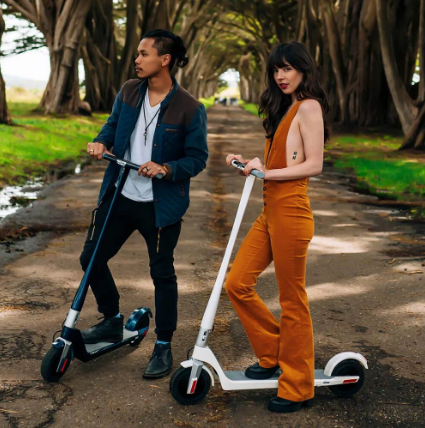
If you want to enjoy all of the benefits of electric scooters without worrying about constant maintenance, a city scooter with solid rubber tires could be the perfect solution.
The Unagi Model One Voyager is an update on the best-selling Model One Classic, offering double the range and extra features that make each ride a breeze.
With puncture-proof solid rubber tires and air pockets that offer front and rear suspension, the scooter can handle your daily commute and offers shock absorption without the added maintenance of pneumatic tires.
We broke the mold with this one, and it's available with the Unagi all-access monthly subscription service. You can enjoy everything our scooters offer for a small monthly fee - with free servicing.
The bottom line
Understanding the importance of tire pressure for electric scooters is vital to enjoying a safe and smooth ride if you use pneumatic tires, and regularly checking your tires extends their lifespan.
Most importantly, regular maintenance ensures you avoid accidents on the road and enhance your scooter's performance.
Remember, if you'd rather just enjoy your electric scooter, solid rubber tires are a great solution and offer accessibility without worrying about constant tire checks.
FAQs
How often should I check my electric scooter's tire pressure?
You should check pneumatic tires at least once weekly. However, if you're planning a long ride, checking the tires before you set off is best to prevent accidents.
Can I use a regular tire pump for my electric scooter?
Yes, you can use a regular tire pump, but investing in a pump with a pressure gauge is ideal for accurate inflation.
Are there different tire pressure requirements for various scooter models?
Different scooter models and rider weights may have varying tire pressure recommendations. Always check your manual for guidance.
Is tire pressure critical for electric scooters with solid tires?
Solid tires don't need inflation, but ensuring they're installed correctly and are free from damage is still essential.

“Is my scooter legal?” is a question many are increasingly asking. The micromobility industry is one of the fastest-growing and most exciting in the world—with promises for...in addition to abundances of the basics of time and money savings. And with this pace of innovation comes a struggle for regulation to keep up.
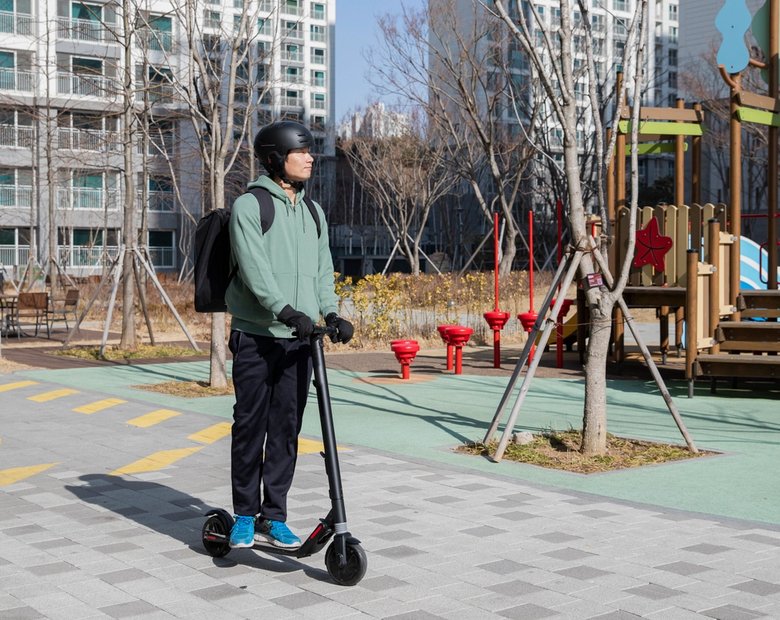
So, you're thinking about joining the electric scooter revolution, huh? You've seen those sleek and stylish scooters zipping around town, effortlessly gliding through traffic, and you can't help but wonder: Are electric scooters easy to ride?
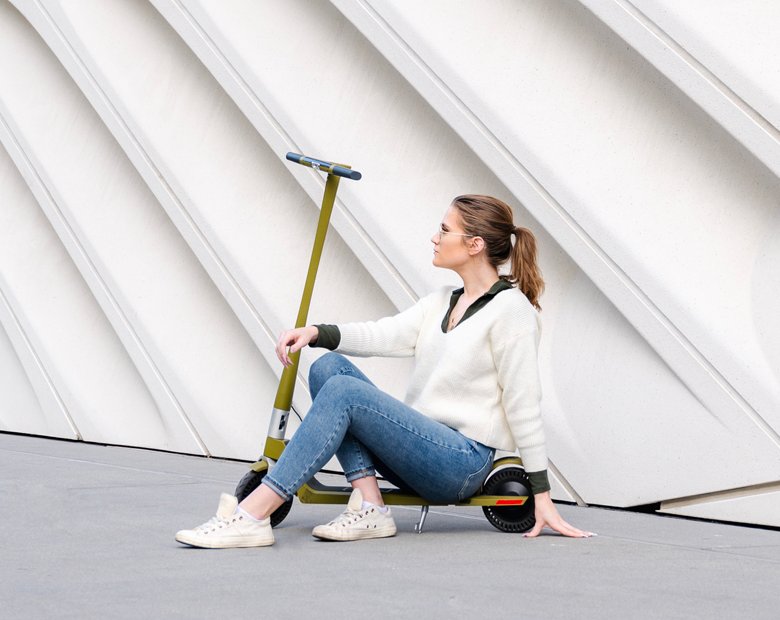
In this guide, we'll break down what defines a lightweight electric scooter, why you should choose one, and the top features you should look for.
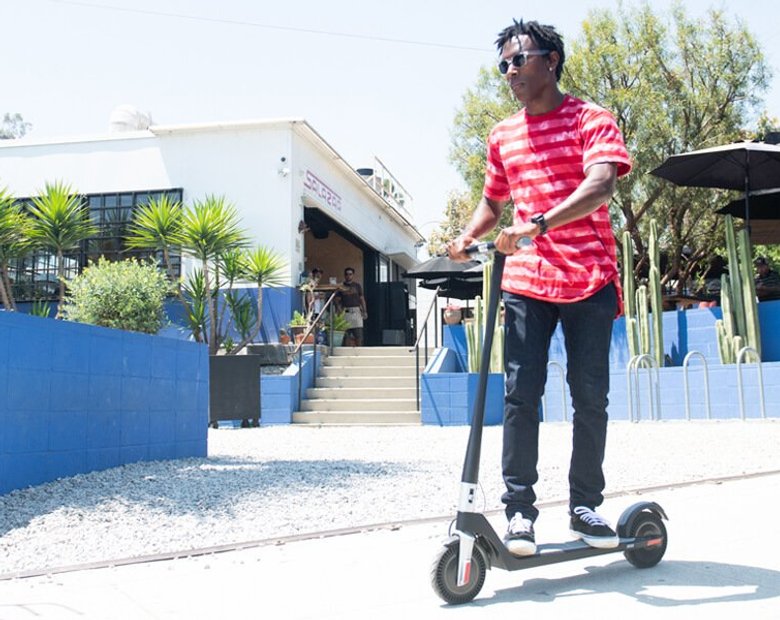
Want to get the most out of your electric scooter battery and extend your riding adventures? We've got you covered with our comprehensive guide full of maintenance tips and best practices.


*Disclaimer: Unagi, INC. has used best efforts, but does not in any manner guarantee the accuracy of the below findings regarding electric scooter laws in the United States or internationally. Electric scooter riders or those considering to purchase or begin…

It’s beyond question that we must drastically reduce carbon emissions in the coming years to head off the worst effects of climate change. How we do that has been a matter of considerably drawn-out debate. As individuals, it can be…

If you're considering riding an electric scooter for the daily urban commute - or even just for recreation - this article will give you the lowdown on getting insurance for an electric scooter.
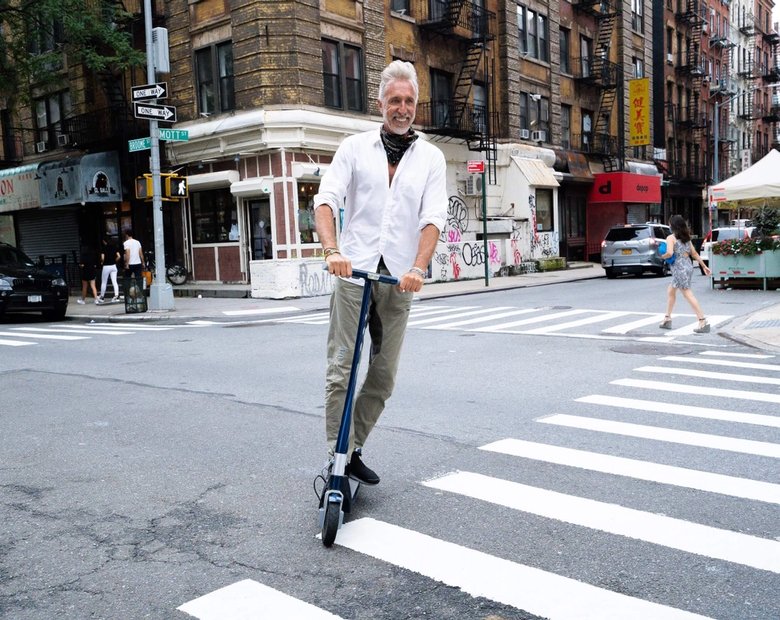
In many regions, there's a clear restriction against riding electric scooters on the road, with the rules steering their use towards designated areas such as bicycle lanes, multi-use paths, and shared street paths.

The basis and the premise of my work is that we either operate out of love or we operate out of fear...Time is currency. The coolest thing about the scooters is that it's really quick, and it goes uphill. From there, traveling more efficiently and having a good time doing it--I think that's the most important thing.

Cynthia Leu has a full plate. A tech worker by day, Cynthia spends her off time balancing the parallel lives of a powerlifter, entrepreneur, mental health advocate, and more. Riding Unagi helps this USMC veteran cut down on everyday…

https://www.youtube.com/watch?v=7m2hVBE62LY Rasheed Muhammad is sick of Los Angeles traffic. In order to preserve his sanity, Rasheed has traded his everyday driving habit for the portable and beautiful Unagi Model One. It’s an essential accessory for navigating LA streets -- and…

Rich Lee, Co-Founder of San Francisco’s SPRO Coffee Lab, wants to share his love for coffee with the world. He depends on riding Unagi to avoid the hassle of navigating the parking crunch in the booming Mission Bay neighborhood.…












